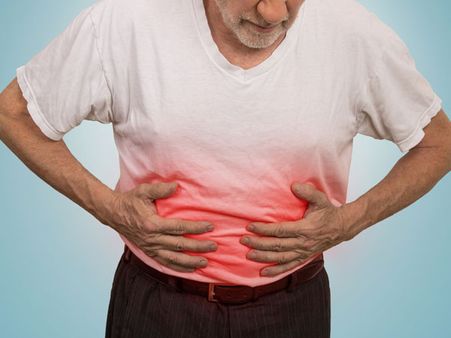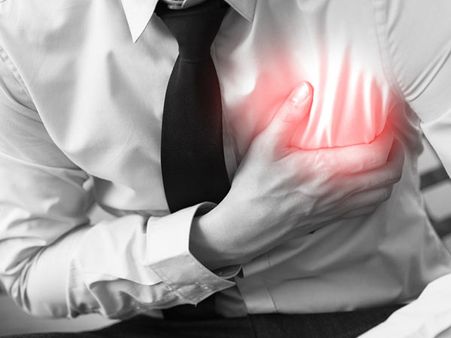Just In
- 2 hrs ago

- 6 hrs ago

- 6 hrs ago

- 12 hrs ago

Don't Miss
- Finance
 Stock Market Live Updates: Nifty Forecast To Lose Each Week; Infosys's ADR Dips 2.6% Over Night
Stock Market Live Updates: Nifty Forecast To Lose Each Week; Infosys's ADR Dips 2.6% Over Night - Movies
 Bade Miyan Chote Miyan Box Office Day 9 Prediction: Akshay’s Film To Cross 51Cr Ahead Of 2nd Weekend
Bade Miyan Chote Miyan Box Office Day 9 Prediction: Akshay’s Film To Cross 51Cr Ahead Of 2nd Weekend - Sports
 LSG vs CSK IPL 2024: Four Batters Who Can Score Most Runs in Match 34
LSG vs CSK IPL 2024: Four Batters Who Can Score Most Runs in Match 34 - News
 12 Jurors Picked For Donald Trump’s Hush Money Trial, Alternate Selection Continues
12 Jurors Picked For Donald Trump’s Hush Money Trial, Alternate Selection Continues - Automobiles
 Aprilia RS 457 Accessories: A Detailed Look At The Prices
Aprilia RS 457 Accessories: A Detailed Look At The Prices - Education
 Karnataka SSLC Result 2024 Soon, Know How to Check Through Website, SMS and Digilocker
Karnataka SSLC Result 2024 Soon, Know How to Check Through Website, SMS and Digilocker - Technology
 Nothing Ear, Ear a With ANC, Up to 42.5 Hours of Battery Launched; Check Price and Availability
Nothing Ear, Ear a With ANC, Up to 42.5 Hours of Battery Launched; Check Price and Availability - Travel
Telangana's Waterfall: A Serene Escape Into Nature's Marvels
Irrfan Khan Diagnosed With Neuroendocrine Tumour: Everything You Need To Know

For the past few days, there have been talks about Irrfan Khan's 'rare disease'. He put all the speculations to rest recently by posting a tweet on his account, saying he has been diagnosed with neuroendocrine tumour.
The Bollywood star who has acted in National and International films is going out of the country to seek treatment for the same.
In this article, we will be telling you more on what neuroendocrine tumour is. Take a look.

The Endocrine System
The endocrine system is a part of the body that is made up of cells that produce hormones. Hormones are chemical substances that pass through the blood cells or plasma, which have a specific activity on the other organs and cells of the body.
What Is Endocrine Tumour?
When the body's healthy cells change and grow out of control, forming a mass can form what is known as a tumour. A tumour can be benign or cancerous. A benign tumour is harmless, which grows but does not spread. A cancerous tumour is malignant, which grows and spreads to the other parts of the body.
An endocrine tumour grows in the parts of the body that produce and release hormones. As the tumour develops from cells that produce hormones, the tumour can also produce hormones. This causes a serious illness.

What Is Neuroendocrine Tumour?
This kind of tumour begins in the cells that produce hormones of the body's neuroendocrine system. A neuroendocrine tumour also known as NET, is a condition in which an abnormal tissue grows in the hormone-producing nervous cells or the neuroendocrine cells of the body. Such neuroendocrine cells are found in the lungs, gastrointestinal tract, including the stomach and intestines.
The function of the neuroendocrine cells are to regulate blood and air flow through the lungs and help in passing the food quickly through the gastrointestinal tract.

Types Of Neuroendocrine Tumour
There are many types of neuroendocrine tumours, which include pheochromocytoma, Merkel cell cancer, and neuroendocrine carcinoma.
- Pheochromocytoma
- Merkel Cell Cancer
- Neuroendocrine Carcinoma
It is a rare tumour that occurs in the chromaffin cells of the adrenal gland. This type of a tumour escalates the production of the hormones - adrenaline and noradrenaline, which increase the heart rate and blood pressure. Though it is a benign tumour, it still can be life-threatening.
It is a fast-growing rare cancer that starts in the cells, which produce hormones under the skin and in the hair follicles. It is usually affects the neck and head region.
This type of tumour can start in other areas of the body such as the lungs, brain, and gastrointestinal tract.

Symptoms & Signs Of Neuroendocrine Tumour
People suffering with neuroendocrine tumour can experience the following symptoms:
- High blood pressure
- Headaches
- Fever
- Sweating
- Anxiety attacks
- Nausea
- Rapid pulse
- Heart palpitations
- Vomiting
- Loss of appetite or weight loss
- Diarrhoea
- Gastric ulcer disease
- Unusual bleeding
- Jaundice

How To Treat Neuroendocrine Tumours
types of doctors who combine different types of treatments. The treatment options depend on several factors which are given below.
- The type of neuroendocrine tumour.
- If it is a cancerous tumour or not.
- Possible side effects
- The patient's overall health
Share this article!
Share it with your close ones, so that they can be aware about it too.

-
 menIrrfan Khan Passes Away: Interesting Facts About India's Most Versatile Actor
menIrrfan Khan Passes Away: Interesting Facts About India's Most Versatile Actor -
 disorders cureNeuroendocrine Tumours (NETs): Types, Symptoms, Causes And Treatment
disorders cureNeuroendocrine Tumours (NETs): Types, Symptoms, Causes And Treatment -
 disorders cureA New Discovery In Genetic Mutation
disorders cureA New Discovery In Genetic Mutation -
 fashionIrrfan Khan's Effortless Style From His Iconic Bollywood Roles Is Just Elegance Personified
fashionIrrfan Khan's Effortless Style From His Iconic Bollywood Roles Is Just Elegance Personified -
 fashion trendsChurails Actress Sarwat Gilani’s Chikankari Suit Is An Ideal Wear For Quiet Festivities
fashion trendsChurails Actress Sarwat Gilani’s Chikankari Suit Is An Ideal Wear For Quiet Festivities -
 bollywood wardrobeHappy Birthday Radhika Madan: Five Times The Actress Impressed Us With Her Distinctive Style
bollywood wardrobeHappy Birthday Radhika Madan: Five Times The Actress Impressed Us With Her Distinctive Style -
 bollywood wardrobeIrrfan Khan's Fashion In His Movies Mirrored The Sensibilities Of Common Men With Uncommon Stories
bollywood wardrobeIrrfan Khan's Fashion In His Movies Mirrored The Sensibilities Of Common Men With Uncommon Stories -
 disorders cureIrrfan Khan Passes Away Of Colon Infection: Know Its Causes, Symptoms, Diagnosis And Treatment
disorders cureIrrfan Khan Passes Away Of Colon Infection: Know Its Causes, Symptoms, Diagnosis And Treatment -
 bollywood wardrobeFive Best Fashion Moments Of Radhika Madan From The Promotional Rounds Of Angrezi Medium
bollywood wardrobeFive Best Fashion Moments Of Radhika Madan From The Promotional Rounds Of Angrezi Medium -
 bollywood wardrobeRadhika Madan, Urvashi Rautela, And Other Divas In Party-Perfect Outfits At Angrezi Medium Screening
bollywood wardrobeRadhika Madan, Urvashi Rautela, And Other Divas In Party-Perfect Outfits At Angrezi Medium Screening -
 bollywood wardrobeKareena Kapoor Khan's Cop Look Is So Minimal And So-Not About The Usual Khaki Uniform
bollywood wardrobeKareena Kapoor Khan's Cop Look Is So Minimal And So-Not About The Usual Khaki Uniform -
 bollywood wardrobeIrrfan Khan, The Man With A Knack Of Fashion
bollywood wardrobeIrrfan Khan, The Man With A Knack Of Fashion


 Click it and Unblock the Notifications
Click it and Unblock the Notifications



